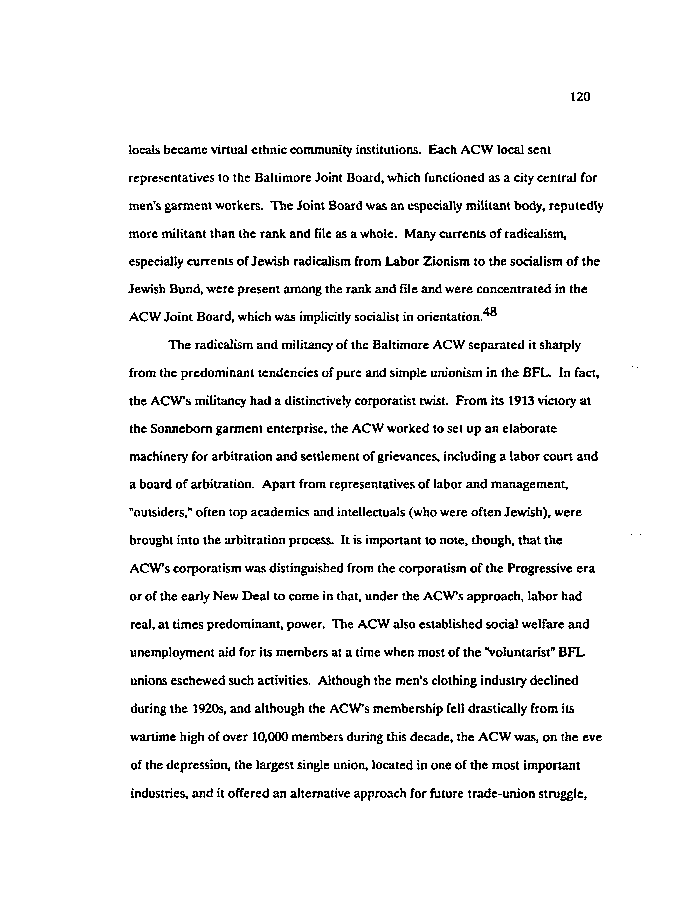|
120
locals became virtual ethnic community institutions. Each ACW local sent
representatives to the Baltimore Joint Board, which functioned as a city central for
men's garment workers. The Joint Board was an especially militant body, reputedly
more militant than the rank and file as a whole. Many currents of radicalism,
especially currents of Jewish radicalism from Labor Zionism to the socialism of the
Jewish Bund, were present among the rank and file and were concentrated in the
ACW Joint Board, which was implicitly socialist in orientation.
The radicalism and militancy of the Baltimore ACW separated it sharply
from the predominant tendencies of pure and simple unionism in the BFL. In fact,
the ACWs militancy had a distinctively corporatist twist. From its 1913 victory at
the Sonneborn garment enterprise, the ACW worked to set up an elaborate
machinery for arbitration and settlement of grievances, including a labor court and
a board of arbitration. Apart from representatives of labor and management,
"outsiders," often top academics and intellectuals (who were often Jewish), were
brought into the arbitration process. It is important to note, though, that the
ACWs corporatism was distinguished from the corporatism of the Progressive era
or of the early New Deal to come in that, under the ACWs approach, labor had
real, at times predominant, power. The ACW also established social welfare and
unemployment aid for its members at a time when most of the "voluntarist" BFL
unions eschewed such activities. Although the men's clothing industry declined
during the 1920s, and although the ACWs membership fell drastically from its
wartime high of over 10,000 members during this decade, the ACW was, on the eve
of the depression, the largest single union, located in one of the most important
industries, and it offered an alternative approach for future trade-union struggle,
|

